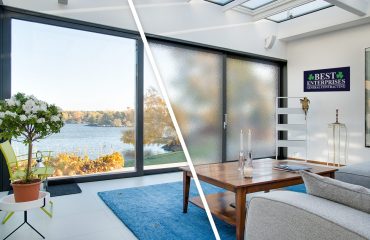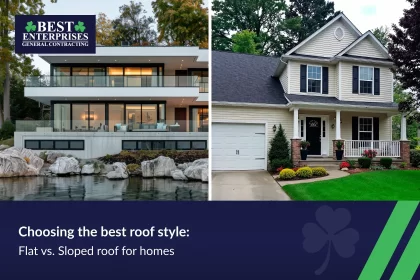
When considering a new roof for your home, you may find yourself debating between a flat roof and a sloped (or pitched) roof. Both options come with their own set of advantages and drawbacks, making it important to choose the one that best aligns with your home’s style, budget, and location. Understanding the differences between flat and sloped roofs is crucial to making an informed decision that will impact not only your home’s aesthetics but also its durability, energy efficiency, and long-term maintenance.
In this article, we’ll dive into the specifics of both roof types, breaking down their pros and cons, and providing expert advice to help you determine which roof type is right for your home. Whether you’re building a modern minimalist home or renovating a traditional property, we’ll guide you through the decision-making process with clear insights, real-world examples, and actionable tips.
Understanding the Basics: What Are Flat and Sloped Roofs?
What is a Flat Roof?
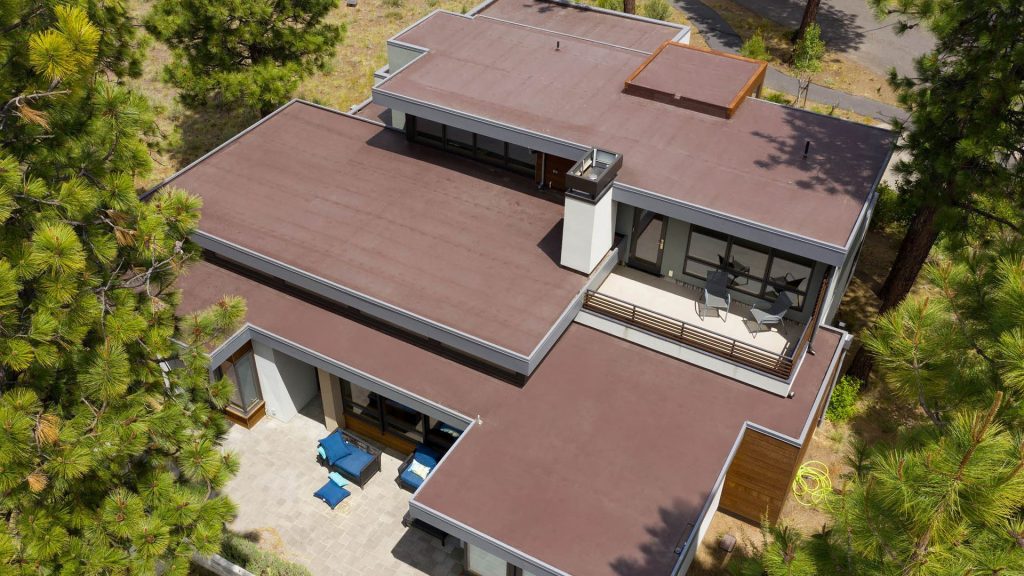
Flat roofs are characterized by their minimal slope, typically less than 10 degrees, which allows for a level surface. These roofs are commonly found in modern architecture, especially in urban or contemporary homes. Materials such as EPDM, TPO, and modified bitumen are typically used for flat roofs due to their durability and ease of installation.
The primary advantage of flat roofs is the additional usable space they provide. Homeowners can install solar panels, create rooftop gardens, or build terraces on flat roofs, making them a practical choice for homes with limited yard space. However, one challenge with flat roofs is drainage. Without proper design and maintenance, flat roofs can accumulate water, leading to leaks or structural issues over time.
What is a Sloped Roof?

Sloped roofs, also known as pitched roofs, are designed with an angle to allow rainwater and snow to easily slide off. This type of roof is common in traditional and suburban homes. Sloped roofs come in various styles, including gable, hip, gambrel, and shed, each offering its own aesthetic and functional benefits.
The key advantage of sloped roofs is their ability to manage water and snow runoff effectively. This reduces the risk of water pooling, which can cause leaks and other issues. Sloped roofs also provide additional space for attic insulation, contributing to better energy efficiency.
Types of Sloped Roof
Sloped roofs come in a wide variety of styles and materials, each offering different benefits in terms of aesthetics, durability, and weather resistance. To help you understand your options, let’s break them down into two main categories: based on material and based on pattern.
1. Sloped Roofs Based on Material
The material you choose for a sloped roof affects not only its look but also its performance, lifespan, and maintenance needs. Below are some of the most common roofing materials used for sloped roofs:
- Asphalt Shingles – The most widely used roofing in the U.S. Affordable, easy to install, and available in many colors and styles. They typically last 15–30 years and are ideal for most climates, though less durable than premium materials.
- Clay or Concrete Tiles – Common on Mediterranean and Spanish-style homes. These tiles are long-lasting, fire-resistant, and insulate well. However, they are heavy and may require additional roof support. Installation is more expensive.
- Metal Roofing – Gaining popularity for both traditional and modern homes. Metal roofs last 40–70 years, are lightweight, and shed rain and snow efficiently. While they cost more upfront, they lower energy bills by reflecting heat.
- Wood Shingles or Shakes
Offer a warm, rustic look, especially on cottages or historic homes. They’re eco-friendly and insulating but need regular maintenance to protect against moisture, insects, and fire. Lifespan is around 20–40 years. - Slate Roofing – One of the most durable and elegant materials. Slate can last over 100 years, is fireproof, and handles extreme weather. It’s also very heavy and expensive, requiring a strong structure and expert installation.
- Composite or Synthetic Shingles – Made to resemble slate, wood, or tile but are lighter and lower maintenance. They’re durable and weather-resistant, though quality varies. High-end versions can be as costly as natural materials.
2. Sloped Roofs Based on Pattern (Design/Shape)
The pattern or shape of a sloped roof impacts how it sheds water, resists wind, and fits into the architectural style of your home. Here are the most common sloped roof designs:
- Gable Roof – A classic triangular shape with two sloping sides. Simple, cost-effective, and great for shedding water and snow. Common in traditional American homes.
- Hip Roof – All four sides slope downward, making it more stable and wind-resistant than gable roofs. Ideal for areas prone to storms or hurricanes.
- Gambrel Roof – A barn-style roof with two slopes per side—the lower being steeper. Adds extra attic or living space and is often seen on Colonial and Dutch-style homes.
- Mansard Roof – A French-inspired design with four sides and a steep lower slope. Maximizes interior space for top floors or attic conversions.
- Shed Roof (Skillion) – A single sloped surface, usually found on modern homes or additions. Easy to build and ideal for installing skylights or solar panels.
- Butterfly Roof – Two roof planes that slope inward, forming a V shape. Offers a unique, modern look and allows for rainwater harvesting and tall windows.
- Combination Roof – Blends styles like gable, hip, or shed roofs to suit custom home layouts. Useful for large homes needing both function and architectural flair.
Pros and Cons of Flat Roofs vs. Sloped Roofs

Flat Roof Pros
- Cost-Effective Installation: Flat roofs are more affordable to install than sloped roofs due to fewer materials and simpler construction. Ideal for budget-conscious homeowners.
- Usable Space: Provides extra space for solar panels, rooftop gardens, or outdoor lounges—especially valuable in urban settings where space is limited.
- Easier Maintenance Access: The flat surface allows for safe and easy access for inspections, cleaning, or minor repairs without needing special equipment.
Flat Roof Cons
- Shorter Lifespan in Harsh Weather: Prone to damage from standing water, UV rays, and snow accumulation if not maintained properly.
- Higher Maintenance Demands: Needs regular cleaning to prevent clogged drains and water pooling, which can lead to leaks or mold.
- Drainage Challenges: Flat roofs require a reliable drainage system—if it’s blocked or poorly designed, water damage can occur quickly.
Sloped Roof Pros
- Superior Drainage & Weather Resistance: Water and snow slide off easily, reducing risk of leaks, structural damage, and ice dams—great for wet or snowy climates.
- Longer Lifespan: Durable and weather-resistant materials like shingles or metal can last decades with minimal repairs.
- Classic Curb Appeal: Traditional sloped roofs enhance a home’s look and are often more appealing to buyers, increasing resale value.
Sloped Roof Cons
- Higher Upfront Costs: More expensive due to complex framing and premium materials; may not suit tight renovation budgets.
- Difficult to Access: Steep angles make inspections and repairs riskier and more expensive, typically requiring professionals.
- Not Ideal for Modern Design: Sloped roofs can clash with minimalist or modern home styles that favor sleek, flat lines.
Key Factors to Consider When Choosing a Roof Type
1. Climate and Weather Conditions
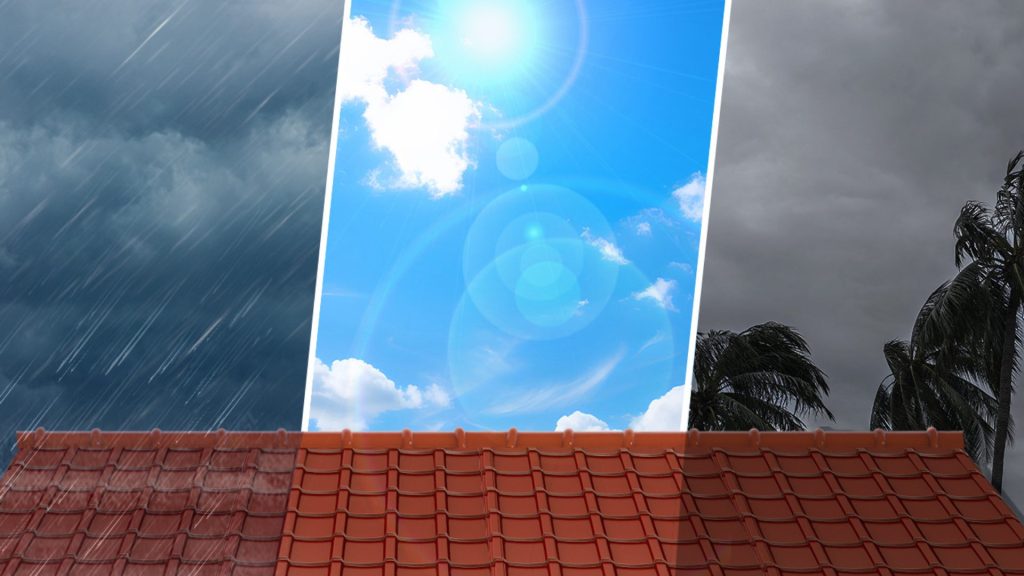
When choosing between a flat or sloped roof, one of the most important considerations is your local climate. For homes in areas with heavy rain, snow, or frequent storms, sloped roofs are generally the better option. The natural angle of a sloped roof allows for better water and snow runoff, which helps prevent pooling, leaks, and ice dams.
On the other hand, flat roofs work well in dry climates with little rainfall, such as the southwestern United States. In these regions, the lack of precipitation reduces the need for drainage, making a flat roof a more cost-effective option.
2. Aesthetic and Architectural Style
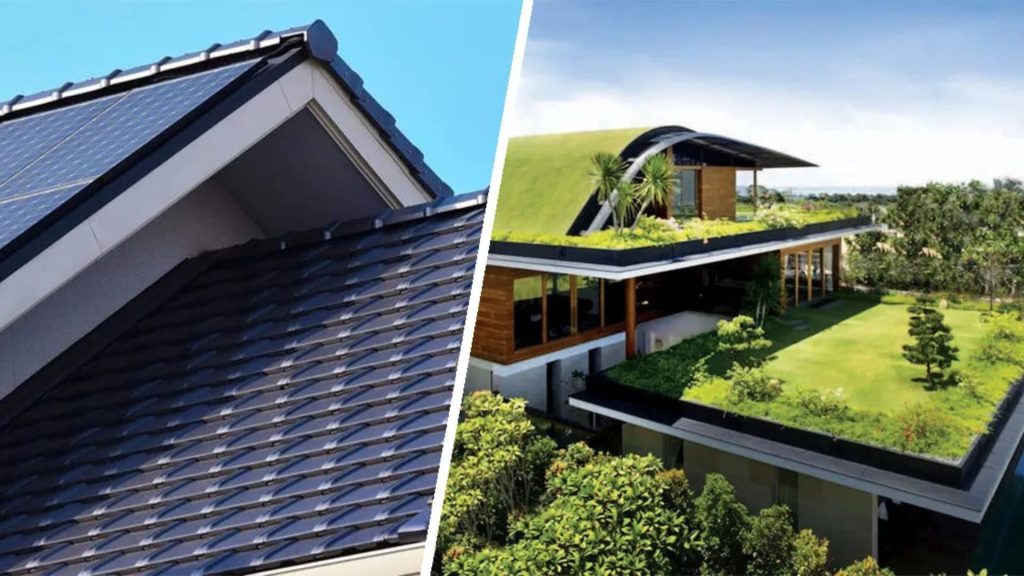
The style of your home plays a significant role in your roofing decision. Flat roofs are often associated with modern or contemporary homes, providing a sleek, minimalist look. These roofs are ideal for urban settings where space is limited and rooftop access is desired.
Sloped roofs, in contrast, are more traditional and are commonly found in suburban or rural settings. Their classic design and various style options (e.g., gable, hip) make them a versatile choice for many different architectural styles.
3. Budget and Long-Term Investment

Flat roofs typically have a lower initial installation cost compared to sloped roofs, making them a more budget-friendly option for homeowners. However, they may require more frequent maintenance and repairs, which can add up over time.
Sloped roofs, while more expensive upfront, tend to have lower long-term maintenance costs due to their durability and resistance to water damage. Additionally, sloped roofs can add more value to your home, which could make them a better long-term investment.
4. Energy Efficiency and Insulation
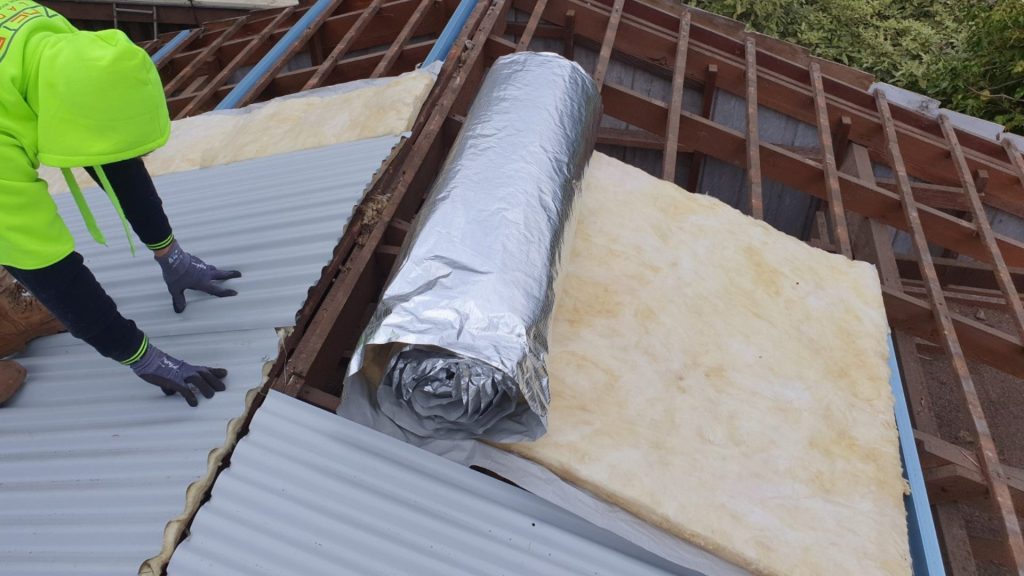
Sloped roofs provide more opportunities for insulation, particularly in the attic, which can improve energy efficiency. This is especially important in colder climates, where proper insulation can help keep your home warm during the winter months.
Flat roofs, on the other hand, can be equipped with reflective coatings or solar panels to enhance energy efficiency. In warmer climates, these options help reduce cooling costs by reflecting sunlight away from the home.
Roof Maintenance Tips for Both Roof Types

Regular roof maintenance is essential to ensure that your roof lasts for its full lifespan and protects your home effectively. Whether you have a flat roof or a sloped roof, each type requires its own approach to maintenance. Below are detailed maintenance tips to help you keep your roof in optimal condition:
Flat Roof Maintenance Tips
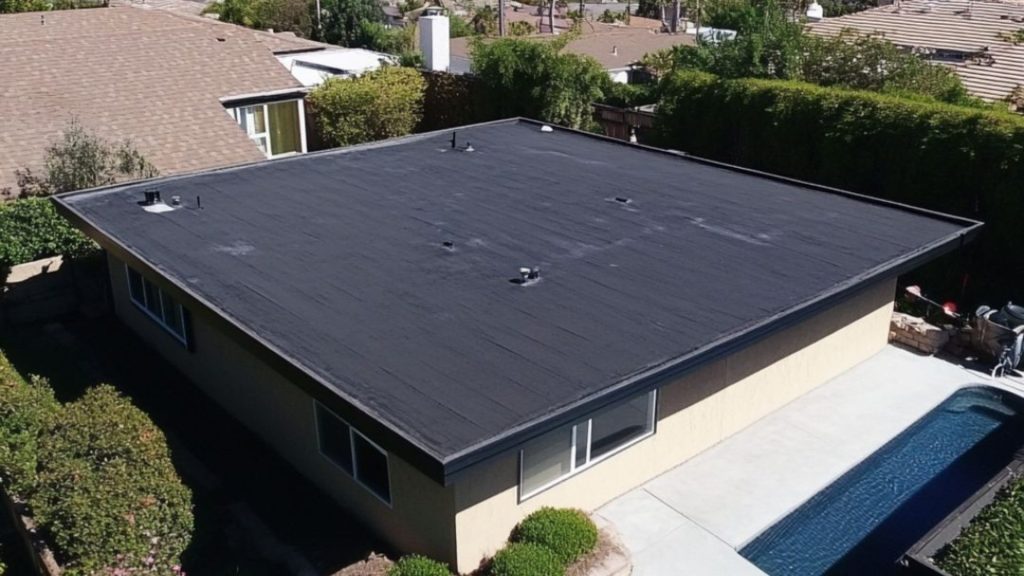
Flat roofs require consistent care to prevent issues like water pooling, leaks, and structural damage. Here’s a comprehensive guide to maintaining a flat roof:
1. Regular Inspections
Flat roofs are more vulnerable to damage than sloped roofs because of their minimal slope. Regular inspections, ideally twice a year (spring and fall), will help you spot problems before they become costly repairs.
What to Look For:
- Cracks: Small cracks in roofing materials can expand over time, leading to leaks.
- Ponding Water: Water should drain quickly from the roof. Ponding water can weaken the roofing materials and cause long-term damage.
- Blistering or Bubbles: These can form on the surface of the roof due to trapped moisture or air, leading to leaks.
Action Tip: Schedule professional inspections every few years to catch issues you may miss on your own.
2. Clear Debris Regularly
Flat roofs tend to accumulate leaves, branches, dirt, and other debris more easily than sloped roofs. If left unchecked, this debris can clog drains and scuppers, causing water buildup.
Action Tip:
- Clean Roof Surface: After heavy winds or storms, clear the roof of debris to prevent water from accumulating in low spots.
- Check Drains & Scuppers: Ensure that drains and scuppers are free from obstructions, especially after storms.
Why This Matters: Clogged drains lead to water pooling, which can weaken the roof membrane and cause leaks. Clean drains regularly to avoid costly water damage.
3. Check for Ponding
Ponding, or standing water, is one of the most common issues with flat roofs. It happens when water doesn’t drain properly and collects in depressions on the roof. This stagnant water can cause the roof material to degrade over time.
Action Tip:
- Install a Drainage System: If you notice ponding regularly, consider installing additional drainage channels or modifying the roof slope to improve water flow.
- Check After Rain: Inspect the roof immediately after heavy rain to ensure the water drains properly and doesn’t stay pooled in areas.
Why This Matters: Left unchecked, ponding water can cause the roof to warp, crack, and leak. Preventing ponding can significantly extend your roof’s lifespan.
4. Inspect for Signs of Wear or Damage on Roofing Membrane
Flat roofs usually have a single-layer membrane made of materials like EPDM, TPO, or modified bitumen. Over time, these materials can wear down due to UV exposure, foot traffic, or harsh weather conditions.
Action Tip:
- Look for Tears and Blisters: These issues can develop from heat exposure or physical damage.
- Check Seams and Edges: Inspect the seams where the membrane joins other parts of the roof. These are areas prone to leaks.
Why This Matters: Roof membranes protect against leaks and moisture infiltration. Addressing wear early can prevent costly repairs later.
Sloped Roof Maintenance Tips
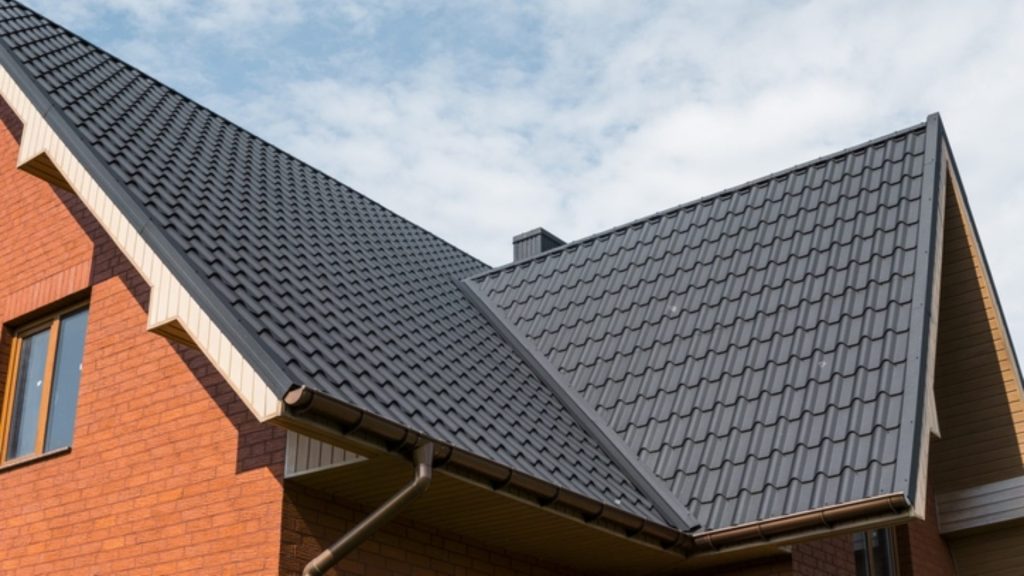
Sloped roofs are generally more resilient against the elements, but they still require regular maintenance to ensure their durability and effectiveness. Here’s how to care for a sloped roof:
1. Shingle or Tile Inspections
Over time, shingles or tiles on sloped roofs can become cracked, missing, or damaged due to weather conditions like hail, heavy winds, or aging. It’s important to inspect these components regularly.
What to Look For:
- Missing or Cracked Shingles/Tiles: If any are missing or cracked, water can infiltrate and damage your roof structure.
- Curling or Lifting Shingles: This often indicates that the shingles have reached the end of their lifespan or that there’s an underlying issue with your roof’s ventilation.
Action Tip:
- Replace Damaged Shingles: Replace cracked or missing shingles immediately to prevent leaks.
- Look for Granule Loss: If shingles are losing granules, it may be a sign of age, and replacement may be needed soon.
Why This Matters: Damaged shingles or tiles compromise your roof’s ability to protect your home from water infiltration and weather damage. Timely replacement helps prevent leaks and major repairs.
2. Gutter Cleaning
Gutters play an essential role in directing water away from your home, but they can quickly become clogged with leaves, twigs, and other debris. Clogged gutters can lead to water pooling on your roof or seeping into your home’s foundation.
Action Tip:
- Clean Gutters Quarterly: Clean your gutters at least four times a year, especially in fall after the leaves have fallen.
- Ensure Proper Downspout Flow: Ensure downspouts are clear and direct water at least 3 to 5 feet away from your home’s foundation.
Why This Matters: Keeping gutters clean ensures that rainwater is properly diverted away from your roof and home, preventing damage to the roof, siding, and foundation. Clogged gutters can lead to roof leaks, ice dams, or structural damage.
3. Flashing Check
Flashing is a critical component in sealing joints, vents, skylights, chimneys, and valleys where different roof planes meet. Over time, flashing can corrode, crack, or loosen, allowing water to seep through.
Action Tip:
- Inspect Flashing Regularly: Look for rust, cracks, or lifting edges around chimneys, vents, and skylights.
- Re-seal Flashing: If you notice any gaps or loose flashing, reseal them with roofing sealant or call a professional roofer to replace the flashing.
Why This Matters: Flashing is essential for preventing water infiltration around penetrations in your roof. Proper maintenance of flashing helps protect vulnerable areas from leaks and water damage.
4. Clean and Check for Moss or Algae Growth
In damp or shaded areas, moss and algae can grow on your roof’s surface, leading to premature aging of the roofing material.
Action Tip:
- Wash the Roof: Use a low-pressure power washer to remove moss or algae buildup, or apply a cleaning solution designed for roofing materials.
- Trim Overhanging Trees: If your roof is shaded by trees, trim branches regularly to reduce the amount of debris and moisture on the roof.
Why This Matters: Moss and algae retain moisture, which can cause your roofing materials to deteriorate faster. Removing them helps extend the life of your roof.
Which Roof Type Is Best for Modern Homes?
- Modern Homes in Urban Areas: Flat roofs are increasingly popular for their space efficiency and minimalist aesthetic. They’re perfect for green roofs, solar energy systems, or elevated outdoor living.
- Suburban or Family Homes: Sloped roofs remain the preferred choice due to their longevity, insulation potential, and timeless appearance.
Conclusion
Maintaining your roof is an ongoing task, but with regular inspections and a proactive approach to repairs, you can extend the life of your flat or sloped roof and prevent costly damages. Whether you have a flat roof that requires attention to drainage and membrane condition or a sloped roof that needs periodic shingle inspections and gutter cleaning, staying on top of maintenance will ensure your home remains protected and secure for years to come.
If you’re unsure about performing any of these tasks yourself, it’s always a good idea to consult with a professional roofer. Regular maintenance will not only improve your roof’s performance but also increase the long-term value of your home.
For a more personalized recommendation, we encourage you to contact Best Enterprises General Contracting for a free consultation. Our expert team can help you determine the best roofing solution for your home based on your specific needs and preferences.

